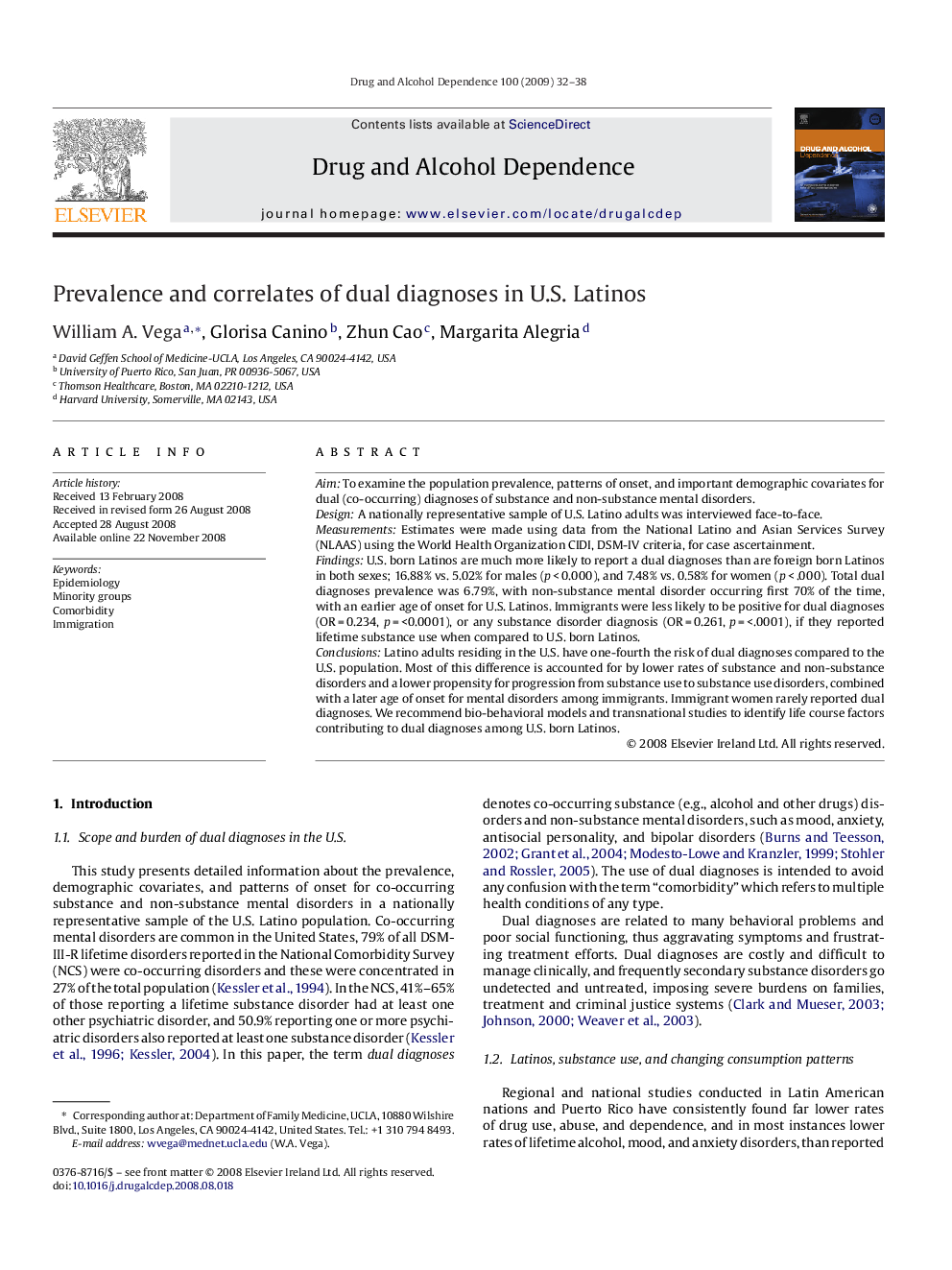| Article ID | Journal | Published Year | Pages | File Type |
|---|---|---|---|---|
| 1070990 | Drug and Alcohol Dependence | 2009 | 7 Pages |
AimTo examine the population prevalence, patterns of onset, and important demographic covariates for dual (co-occurring) diagnoses of substance and non-substance mental disorders.DesignA nationally representative sample of U.S. Latino adults was interviewed face-to-face.MeasurementsEstimates were made using data from the National Latino and Asian Services Survey (NLAAS) using the World Health Organization CIDI, DSM-IV criteria, for case ascertainment.FindingsU.S. born Latinos are much more likely to report a dual diagnoses than are foreign born Latinos in both sexes; 16.88% vs. 5.02% for males (p < 0.000), and 7.48% vs. 0.58% for women (p < .000). Total dual diagnoses prevalence was 6.79%, with non-substance mental disorder occurring first 70% of the time, with an earlier age of onset for U.S. Latinos. Immigrants were less likely to be positive for dual diagnoses (OR = 0.234, p = <0.0001), or any substance disorder diagnosis (OR = 0.261, p = <.0001), if they reported lifetime substance use when compared to U.S. born Latinos.ConclusionsLatino adults residing in the U.S. have one-fourth the risk of dual diagnoses compared to the U.S. population. Most of this difference is accounted for by lower rates of substance and non-substance disorders and a lower propensity for progression from substance use to substance use disorders, combined with a later age of onset for mental disorders among immigrants. Immigrant women rarely reported dual diagnoses. We recommend bio-behavioral models and transnational studies to identify life course factors contributing to dual diagnoses among U.S. born Latinos.
